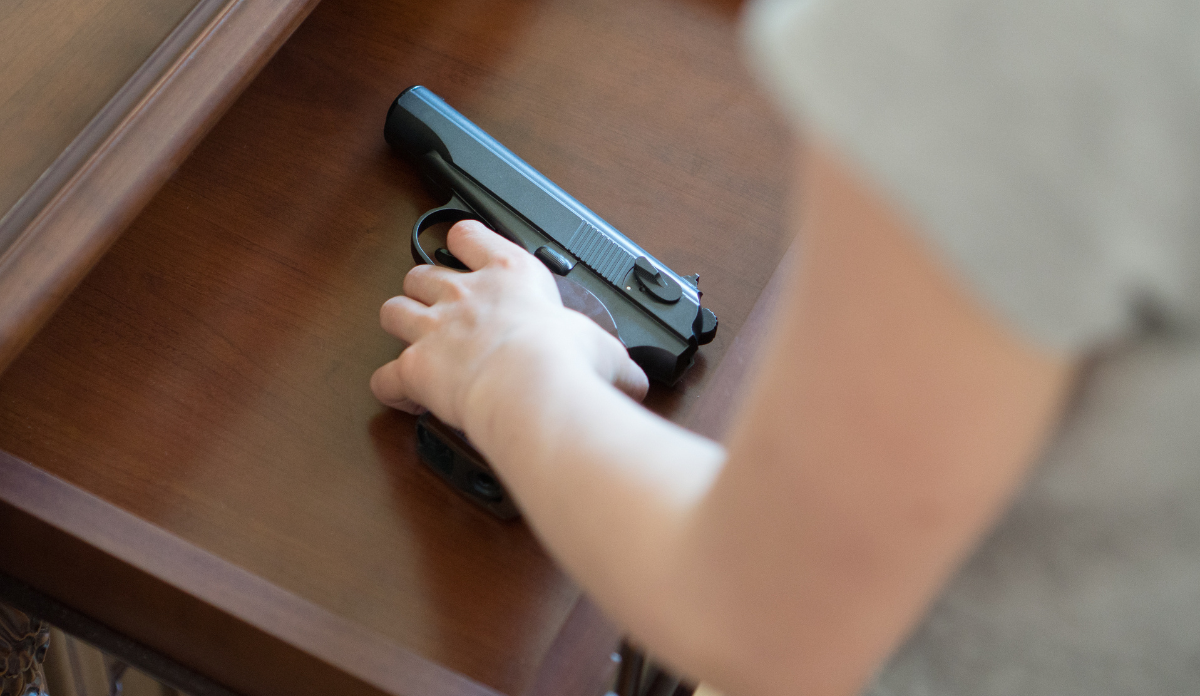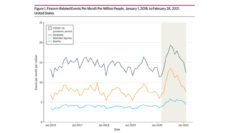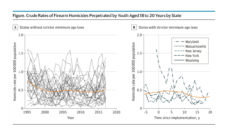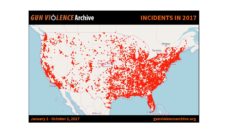In 2020, firearm-related injuries became the leading cause of death for children and teens under age 18, surpassing motor vehicle crashes for the first time.
Recent data from the 2021 National Firearm Survey estimates that 30 million children in the U.S. live in households with firearms, and 4.6 million children are exposed to at least one loaded, unlocked gun. Firearms in the home increase the risk of unintentional shootings and injuries, suicide, and homicide. Data from the Gun Violence Archive shows a significant increase in firearm-related injuries and deaths among children during the COVID-19 pandemic.
The American Academy of Pediatrics recommends that all guns be stored safely: locked, unloaded, with ammunition locked separately. Unfortunately, fewer than half of gun owners report safe gun storage. In households with children, only 44% of owners report storing all guns safely. Among new firearm owners during the COVID-19 pandemic, nearly 40% reported storing at least one firearm unlocked.
Concern about home and family defense is the most commonly cited motive behind gun ownership and storage practices. Americans’ worry about crime is at its highest level since 2016, with 88% of gun owners saying they need to protect themselves, their families, and their property. The percentage of Americans believing a gun in the home makes them safer has nearly doubled since 2000.
But safe from what? What leads parents to keep a loaded firearm “at the ready”? I explored the factors shaping unsafe gun storage among owners with children and teens at home. Using data from an internet-based sample of U.S. adults collected in early 2019, I found that 32% of parents or caregivers reported having a loaded gun accessible at home all of the time.
These anxieties may not reflect a clear, concrete threat to physical safety, but they can be experienced as challenges to the security and stability of one’s relative social position.
Why? Not because of age, gender, income, marital status, or even political affiliation, despite prior associations between these factors and storage behaviors. It is not because of prior crime victimization, fear of crime or victimization, or perceived risk of future victimization. It is not because of police distrust.
Instead, it is cultural anxiety that is associated with unsafe gun storage, even after accounting for type of gun(s) owned and protective motives. Cultural anxiety captures antagonism toward social and cultural change, measured by statements like “The American way of life needs to be protected from foreign influence;” and “America is in danger of losing its identity.” These sentiments became focal talking points in the 2016 presidential election, and they remain salient today. These anxieties may not reflect a clear, concrete threat to physical safety, but they can be experienced as challenges to the security and stability of one’s relative social position. Such perceptions are distressing, spurring feelings of uncertainty and unpredictability, that — for some Americans — may be managed by knowing they have a loaded gun within easy reach.
So, what does this mean? Safe gun storage reduces the risk of gun-related injury and death, but parents too often see safe storage methods as a nuisance, and overestimate that their child will act responsibly upon encountering an unsecured weapon. We have a long way to go in crafting effective gun safety messaging. The factors acting as barriers to safe storage (even among gun-owning parents) are complex and deeply culturally embedded.
Public health campaigns aimed at promoting safe storage practices may benefit from insights from the social sciences. Recent research suggests that gun-owning parents are more amenable to safe-storage education from non-medical sources, such as military, law enforcement, hunting/outdoors groups, and the National Rifle Association. The significance of cultural anxiety for unsafe storage sheds insight into why, for gun-owning parents, these authority figures are deemed trustworthy sources. For safety messaging to be effective, content is important, but so too is the identity of the person delivering it.
Photo via Getty Images














